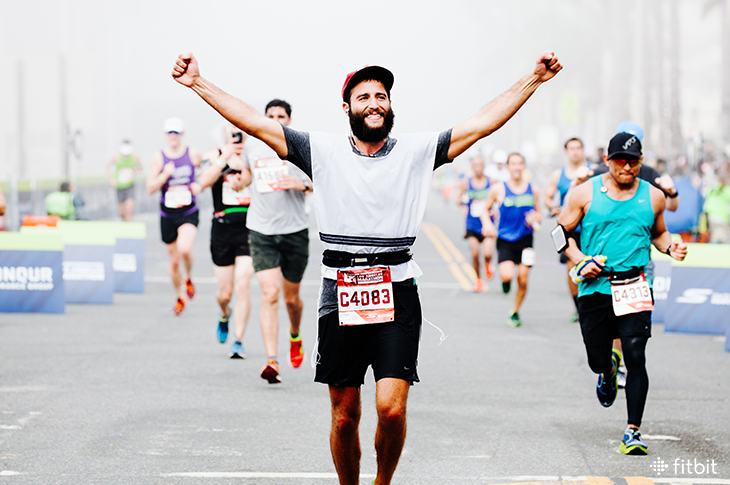 Name the race: You can find one or more nearly any weekend of the year, in any city or town in the country. And in 2015, nearly 7.6 million people finished one, according to Running USA—that’s 400% more participants than seen in any other race distance. We’re talking about the humble 5K. It’s a fun-run staple, after all.
Name the race: You can find one or more nearly any weekend of the year, in any city or town in the country. And in 2015, nearly 7.6 million people finished one, according to Running USA—that’s 400% more participants than seen in any other race distance. We’re talking about the humble 5K. It’s a fun-run staple, after all.
Yet while the 5K distance might not be the one runners proudly display on the backs of their cars, those 3.1 miles can provide a mighty challenge for any athlete, at any fitness level.
For beginners, it’s an ideal first goal—to be able to run that far without stopping. Running for three miles means you’ve learned to pace yourself, settle into a groove, and keep your heart rate elevated for 30 or more minutes—which is no small feat.
Pretty soon, however, if you keep training and racing, you’ll want to run faster than your usual pace to do better in the 5K. And that’s a good thing, says New York Road Runners’ coach emeritus Bob Glover, author of The Runner’s Handbook and The Competitive Runner’s Handbook.
“Running faster for a 5K helps improve your mechanics,” Glover says. “You’ll need to concentrate on moving your arms, and picking up your knees. Plus, you’ll learn the focus needed to keep pushing when it gets tough.”
For experienced runners, the 5K can be either a training ground for longer races (many elite marathoners will focus on the 5K distance between key races), or a complete challenge on its own. “If your goal is to do well in longer races—the 10K, half-marathon or marathon—improving your pace for the 5K will help make your longer race pace feel easier,” Glover says. “Ironically for top runners, the 5K can be one of the toughest races out there. If you push the 5K to the limit, you’re red-lining the whole way.”
If you’ve never run a 5K, slowly build your distance each week, adding running time to your walks. For example, walk for five minutes, run for two minutes, walk for five minutes, and so on, until you’ve completed 30 minutes of exercise. Add another minute of running to each run section (subtracting from the walking intervals) until you can run for the full 30 minutes. Then, start tracking your mileage. You’ll likely be running a 5K.
For 5K veterans, here are some ways to run the distance faster:
Track Speed
Find a track if possible, because it is easier to focus, Glover says. After warming up with an easy two to four laps, run one loop (400 meters) faster (but not ‘all out’) than your normal training pace. By the end of the loop, your heart rate should be moderately high—if not trending into your peak zone. Rest for about the same amount of time that it took you to run the lap. Allow your heart rate to drop below the cardio zone before starting again, and
repeat the loop three to four times. After a full recovery—enough time so you’re not breathing hard—run a half lap (200 meters) three to four times, and rest between each, for about as long as it took you to run.
Perform Fartleks
Meaning “speed play,” in Swedish, these intervals allow you to experience speed without tapping out. To do them, pick up your pace during runs, either for 30 to 60 seconds, or until you reach a landmark (like an intersection, for example). Slow until you’ve recovered your breath, and then run hard again. “It’s important to include variety,” Glover says, “Do some 30 second pickups, some 60 seconds, and some quick sprint bursts.” Insert six to eight pickups into a three to four mile run.
Run Long
Aim to run for 60 to 80 minutes—which is long enough to tire your large muscle groups, yet still recruit fast-twitch muscle fibers which will be available when you choose to speed up. You’ll also increase your cardiovascular infrastructure—red blood cells, capillaries, mitochondria—which let you process more oxygen at a faster pace. More advanced runners can pick up the pace in the final two to four miles of long runs, to get used to pushing hard when fatigued.
Photo courtesy of Los Angeles Marathon (which also hosts 5K events).
This information is for educational purposes only and is not intended as a substitute for medical diagnosis or treatment. You should not use this information to diagnose or treat a health problem or condition. Always check with your doctor before changing your diet, altering your sleep habits, taking supplements, or starting a new fitness routine.

I love the tips for increasing my speed, many thanks!